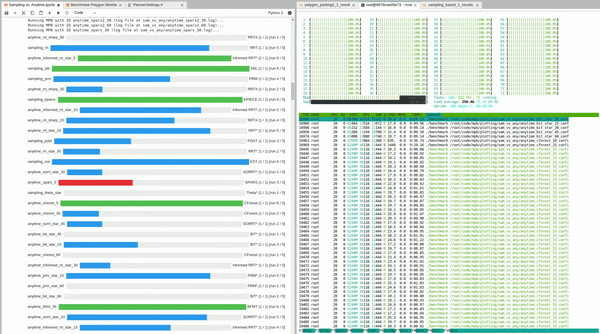Getting Started
This project contains several build targets in the experiments/ folder. The main application for benchmarking is the benchmark executable that gets built in the bin/ folder in the project directory.
Running a benchmark
Python Frontend (Jupyter Notebooks)
Run jupyter lab from the project folder and navigate to the python/ directory where you can find several notebooks that can execute experiments and allow you to plot and analyze the benchmark results.

C++ Backend
⚠ It is recommended to run the benchmarks from the Jupyter frontend.
Alternatively, you have the option to manually run benchmarks via JSON configuration files that define which planners to execute, and many other settings concerning environments, steer functions, etc.
In the bin/ folder, start a benchmark via
./benchmark configuration.json
where configuration.json is any of the json files in the benchmarks/ folder.
Optionally, if multiple CPUs are available, multiple benchmarks can be run in parallel using GNU Parallel, e.g., via
parallel -k ./benchmark ::: ../benchmarks/corridor_radius_*
This command will execute the experiments with varying corridor sizes in parallel. For more information, consult the GNU Parallel tutorial.
This will eventually output a line similar to
Info: Saved path statistics log file <...>
The resulting JSON log file can be used for visualizing the planning results and plotting the statistics. To get started, check out the Jupyter notebooks inside the python/ folder where all the plotting tools are provided.